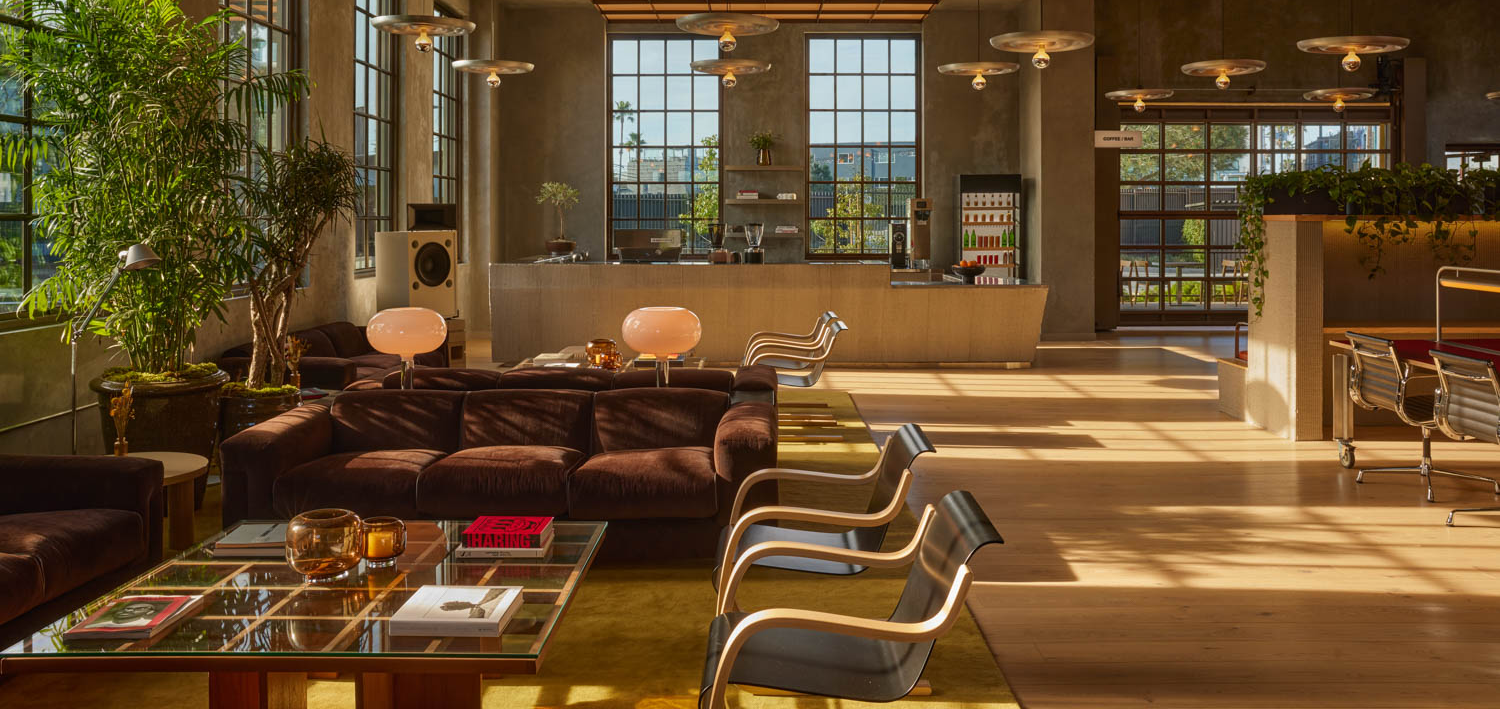Model Home: Rem Koolhaas Unveils Knoll Prototypes at Prada
If fashion were high school, Miuccia Prada might be the plain, nerdy girl who still manages to be popular. Best friends with the cheerleaders, despite her funny outfits. Rich, at $12.4 billion by Forbes’s last count. But the brainy kids think she’s cool, and the teachers love her. If architecture were high school, Rem Koolhaas would be the kind of consummate outsider whose charming disaffection quickly makes him an insider with the right people. He has the studied scowl of success. He and Prada hold court at separate tables in the cafeteria.
Of course, fashion and architecture are not high school but very grown-up businesses. Among their most powerful names are Prada and Koolhaas. Royals enjoy meeting each other, and the two designers have collaborated on a variety of projects including 2001’s huge Prada “epicenter” store and gallery in New York. “We wanted to be seen to waste space, which is another form of luxury,” Koolhaas told New York Magazine, astutely identifying the city’s intense square-foot fetish. In 2008, his Office for Metropolitan Architecture came to Milan to convert a century-old distillery into the Fondazione Prada. Their latest collaboration was the runway show for the Prada menswear fall-winter 2013 collection.
As it turned out, the timing of the show gave OMAthe opportunity to preview prototypes of tools for life, an 11-piece collection of furniture that Knoll would officially introduce at this year’s Salone Internazionale del Mobile. And the runway presentation’s theme, “The Ideal House,” was particularly germane for a fashion designer famously interested with de-and re-constructing conventions, as decor is about the biggest convention of them all. “The idea was to build a scenography inspired by the ‘ideal’ domestic environment of a ‘bourgeois’ home, the bourgeois being a topic very dear to Mrs. Prada,” OMA associate Ippolito Pestellini laparelli explains. In more concrete terms, a wooden runway was built around the perimeter of the 4,300-square-foot exhibition space, so the audience of 800, seated a few steps up or down, was wrapped on four sides by groupings of OMA’s prototypes.
Models wearing 45 looks glided stone-faced, for 9 minutes 37 seconds, through a fluid “interior” of vaguely suggested room settings, more a walk through the lobby of a boutique hotel than a trip from the den to the kitchen. With an accompaniment that included excerpts from Italian 1960’s film scores, the effect was of a tracking shot. “It was meant to be a movie,” laparelli adds. Wall projections depicted either windows showing animated exterior views or doors opening into other spaces. A cat balanced on a ledge, then jumped from screen to screen—now outside, now inside. A flock of birds flew by.
In large part, the concept was a reference to films by Michelangelo Antonioni, Jean-Luc Godard, and others who “told stories of bourgeois characters,” laparelli says. The presiding spirit was that of Antonioni’s muse, the actress Monica Vitti, whose beautiful vacancy defined an era in Italian cinema. “We looked at a lot of images of her,” laparelli recalls. Prada’s expressionless models could have been Vitti’s grandsons. The atmosphere of detached desire also recalled Godard’s depictions of the middle class. His Weekend—in which an automobile accident victim, staring in shock as her bleeding semiconscious husband crawls out of the burning car, screams, “My Hermès bag!”—came out in 1967. An impressionable Miuccia turned 18 that year.
OMA’s prototypes, though, were very much of the contemporary moment, made of wood, metal, acrylic, and foam in bold colors and graphic geometric shapes. Vignettes of the pieces—seating, tables, a massive counter—were propped with guitars, record players, vases, and other everyday objects rendered in wood or foam, and a high-contrast cinematic atmosphere was created by spotlighting the furniture and objects against a background painted dark gray. One grouping featured a pair of pink armchairs draped in flexible foam that, like a cowl-neck sweater, can fold up or down to create a high or low back. The chairs flanked a cocktail table composed of white slabs that rotate and slide.
Each of the collection’s 11 pieces was designed as a “hybrid,” laparelli says, for home or office. As produced by Knoll, each performs a variety of functions. Mechanisms such as electric motors and hydraulic pumps change tables from cocktail to bar height or raise and lower stools and chairs. “They have the ability to adjust to multiple configurations, to transform in space,” he says. “One table is two or three tables.” Koolhaas’s interest in audacious adaptability connects back to his 1998 “elevator house” in Bordeaux, France—designed with a living space that can ascend through three levels to accommodate a man paralyzed in an automobile accident that was real, not cinematic. OMA’s theory, laparelli adds, is that today’s informal work environments, for tech start-ups and other young companies, demand a degree of flexibility to be efficient and comfortable. More like domestic environments where, with luck, everybody will be wearing Prada, too.


